India is a land of rich history and cultural heritage, offering an impressive array of Historical Places in India that provide a glimpse into its glorious past. From ancient temples and majestic forts to grand palaces and historic monuments, the historical places in India are nothing short of breathtaking. In this comprehensive guide, we’ll take you on a journey through some of the most significant historical places in India. Each destination captures the essence of India’s remarkable history and will leave you spellbound. Dive into this exploration with Xplro.com and uncover the historical places in India that you must visit.
- The Majestic Taj Mahal, Agra
- The Ancient Temples of Khajuraho, Madhya Pradesh
- The Grand Forts of Rajasthan
- The Ancient Caves of Ajanta and Ellora, Maharashtra
- The Historical City of Varanasi, Uttar Pradesh
- The Red Fort, Delhi
- The Majestic Mysore Palace, Karnataka
- The Magnificent Hampi, Karnataka
- The Grand City of Fatehpur Sikri, Uttar Pradesh
- The Historical Site of Mahabalipuram, Tamil Nadu
- The Historic Gateway of India, Mumbai
- The Historic City of Amritsar, Punjab
- Conclusion
- FAQs
The Majestic Taj Mahal, Agra
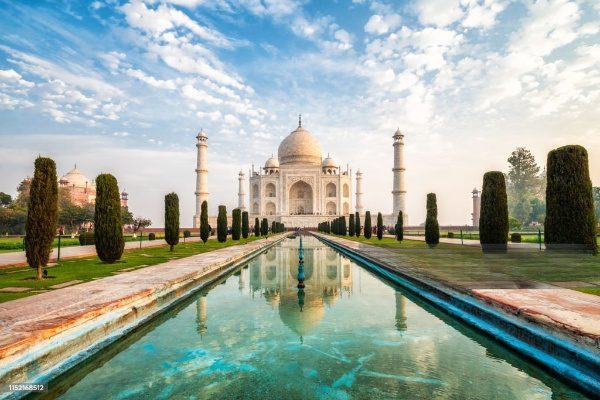
A trip to India wouldn’t be complete without witnessing the awe-inspiring Taj Mahal. This iconic landmark, a jewel among the Seven Wonders of the World, embodies a timeless love story. Mughal emperor Shah Jahan commissioned its construction to honor his late wife, Mumtaz Mahal. The Taj Mahal is a crowning achievement of Mughal architecture, captivating visitors with its dazzling white marble facade, exquisitely detailed carvings, and serene gardens. As sunlight dances throughout the day, the monument’s ethereal beauty transforms, making it an unforgettable sight for any traveler.
- Architectural Details of Historical Places in India: Intricate marble inlay work, majestic domes, and beautiful gardens.
- Historical Significance: Symbol of love and Mughal architectural brilliance.
- Best Time to Visit Historical Places in India: October to March
- Extra Detail: The Taj Mahal glows beautifully under the full moon, offering a magical viewing experience.
The Ancient Temples of Khajuraho, Madhya Pradesh
Carved with a captivating blend of artistry and sensuality, the Khajuraho Group of Monuments stands as a testament to the Chandela dynasty’s reign (950-1050 AD). Recognized as a UNESCO World Heritage Site, these temples are more than just erotic sculptures. Their intricate details depict a profound understanding of human life, the divine, and the interconnectedness of nature and spirituality. Visitors are mesmerized by the symbolism woven into the carvings, a celebration of love, passion, and devotion in their most exquisite forms.
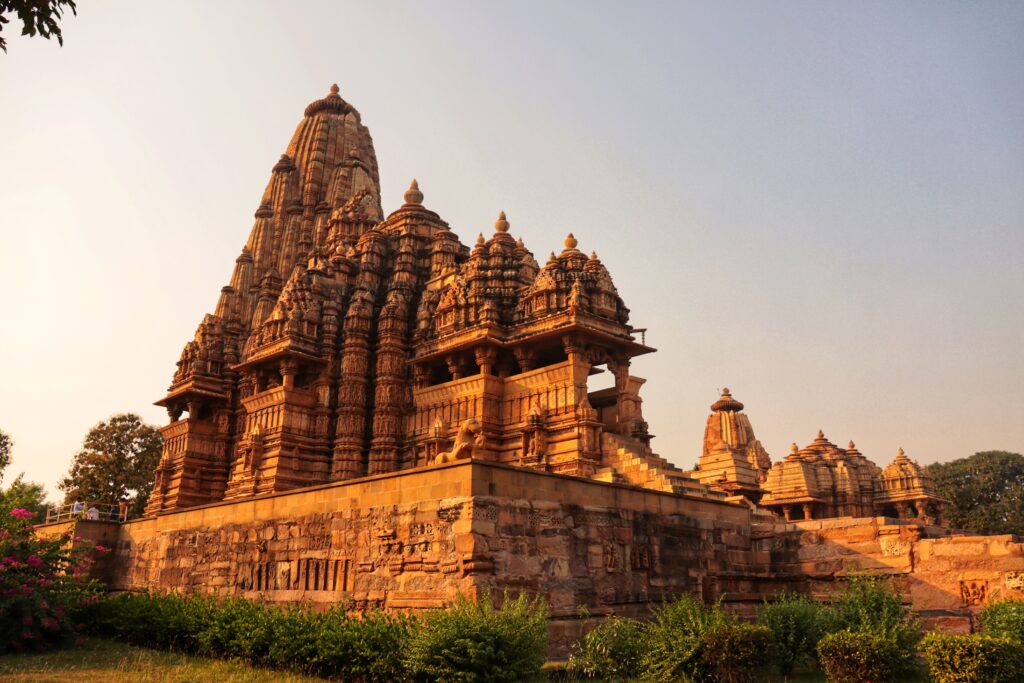
- Architectural Details of Historical Places in India: Detailed carvings and sculptures, impressive temple architecture.
- Historical Significance: Representation of ancient Indian art and architecture.
- Best Time to Visit Historical Places in India: October to March
- Extra Detail: The annual Khajuraho Dance Festival showcases classical Indian dance against the backdrop of the illuminated temples.
The Grand Forts of Rajasthan
Rajasthan is home to some of the most magnificent forts in India. These grand structures not only offer a glimpse into the royal past but also showcase the architectural prowess of ancient India. Here are a few must-visit forts in Rajasthan:
Amber Fort, Jaipur
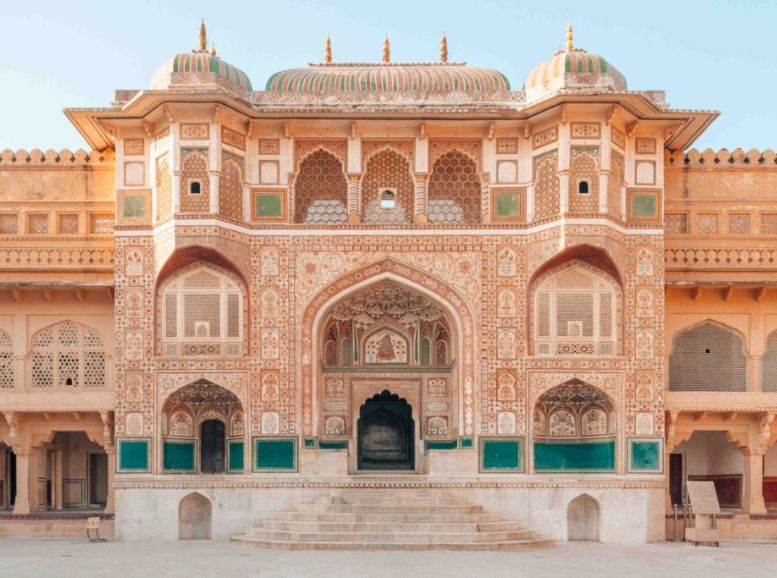
Within Amber Fort’s walls lies a dazzling gem – the Sheesh Mahal. Intricate mosaics shimmer under the warm flicker of candlelight, creating a mesmerizing spectacle. The fort itself, strategically perched, offers breathtaking panoramas of Maota Lake and the Aravalli Hills. Sunrise and sunset paint the scene in magical hues, making it a photographer’s paradise. Amber Fort is a testament to Rajasthan’s architectural mastery and rich heritage. It’s an invitation to step back in time and explore the region’s regal past.
- Architectural Details of Historical Places in India: Stunning mirror work, elaborate carvings, and paintings.
- Historical Significance: Seat of the Rajput Maharajas.
- Best Time to Visit Historical Places in India: October to March
- Extra Detail: The light and sound show at Amber Fort narrates the history of Jaipur and the fort in a captivating manner.
Mehrangarh Fort, Jodhpur
A sentinel in red sandstone, Mehrangarh Fort rises from Jodhpur’s heart, its latticed windows and sprawling courtyards whispering stories of a bygone era. Within its walls, a museum curates a captivating saga of Rajput valor. Gleaming weapons, ornate royal palanquins, and meticulously crafted paintings transport you to the opulent world of the Rathore rulers. As you wander through the fort’s well-preserved chambers and terraces, the captivating blue cityscape of Jodhpur unfolds beneath you, a breathtaking panorama waiting to be explored.
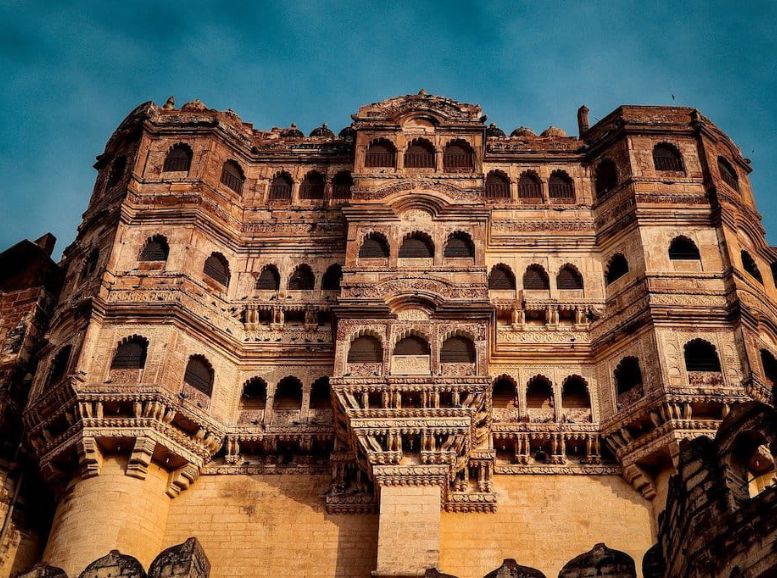
- Architectural Details of Historical Places in India: Massive walls, intricate palaces, and expansive courtyards.
- Historical Significance: Symbol of Rajputana strength and bravery.
- Best Time to Visit Historical Places in India: October to March
- Extra Detail: The fort offers a panoramic view of the “Blue City” of Jodhpur, providing an excellent photo opportunity.
The Ancient Caves of Ajanta and Ellora, Maharashtra
Tucked within a horseshoe-shaped gorge, the Ajanta Caves are a treasure trove of Buddhist art. Intricate murals and sculptures bring the life of Buddha to life, offering a glimpse into this ancient faith. In stark contrast, the Ellora Caves are a testament to India’s religious tapestry. Here, Buddhist, Hindu, and Jain cave temples co-exist, culminating in the awe-inspiring Kailasa Temple – an entire temple carved from a single massive rock. These architectural marvels stand as a powerful reminder of India’s rich cultural heritage, their spiritual and artistic significance continuing to enthrall visitors today.
Ajanta Caves
Imagine a horseshoe-shaped gorge cradling a secret: 30 Buddhist cave monuments meticulously carved into the cliffside. Welcome to the Ajanta Caves. Dating back as far as the 2nd century BCE, these caverns are a treasure trove of artistry. Exquisite frescoes and sculptures adorn the walls, depicting not just the life of Buddha and celestial beings, but also everyday scenes from ancient India. Created with natural pigments, the intricate artwork remains remarkably vibrant, offering a captivating window into the soul of an ancient civilization.
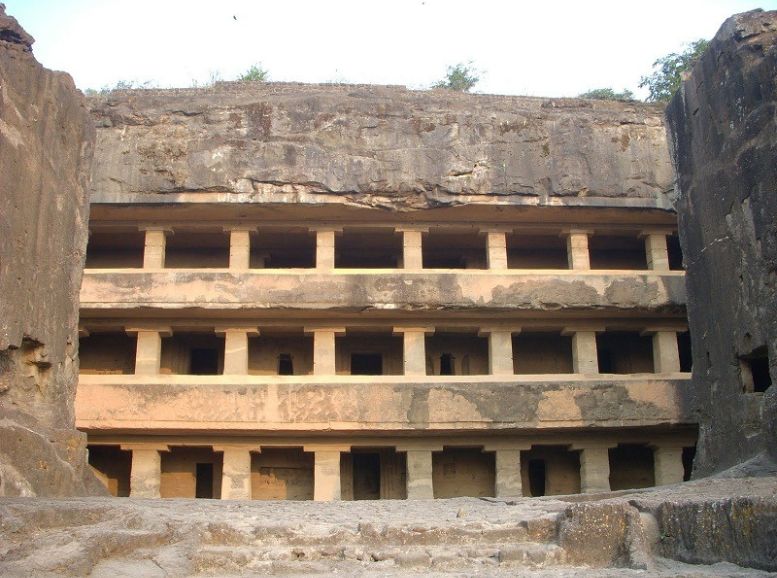
- Architectural Details of Historical Places in India: Detailed frescoes, intricate carvings, and sculptures.
- Historical Significance: Important Buddhist site depicting the life of Buddha.
- Best Time to Visit Historical Places in India: November to March
- Extra Detail: The murals in the Ajanta Caves are considered masterpieces of Buddhist religious art.
Ellora Caves

Ellora Caves: A symphony of religions carved in stone. Hewn from the Deccan plateau between the 5th and 10th centuries CE, these 34 caves resonate with the spirit of ancient India. Buddhism, Hinduism, and Jainism co-exist in artistic harmony, each faith leaving its mark on the cave walls. Be awestruck by the colossal Kailasa Temple, a monolithic marvel dedicated to Shiva. Wander through intricate Jain caves adorned with meticulously crafted sculptures. Ellora is a testament not just to architectural prowess, but to India’s enduring spirit of tolerance and artistic expression.
- Architectural Details of Historical Places in India: Elaborate cave temples, intricate carvings.
- Historical Significance: Symbol of religious tolerance in ancient India.
- Best Time to Visit Historical Places in India: November to March
- Extra Detail: The Kailasa temple in Ellora is a remarkable feat of engineering, carved out of a single rock.
The Historical City of Varanasi, Uttar Pradesh
On the banks of the holy Ganges, Varanasi pulsates with life. This ancient city isn’t just a destination, it’s an immersive experience. Pilgrims and travelers alike flock here to witness vibrant rituals and traditions that have endured for centuries. Along the ghats, like Dashashwamedh and Manikarnika, devotees bathe in the sacred waters, their chants echoing through the air. Golden spires of temples like Kashi Vishwanath pierce the sky, while bustling markets and labyrinthine alleys thrum with the rhythm of daily life. In Varanasi, the past whispers in every corner, seamlessly intertwined with the present.
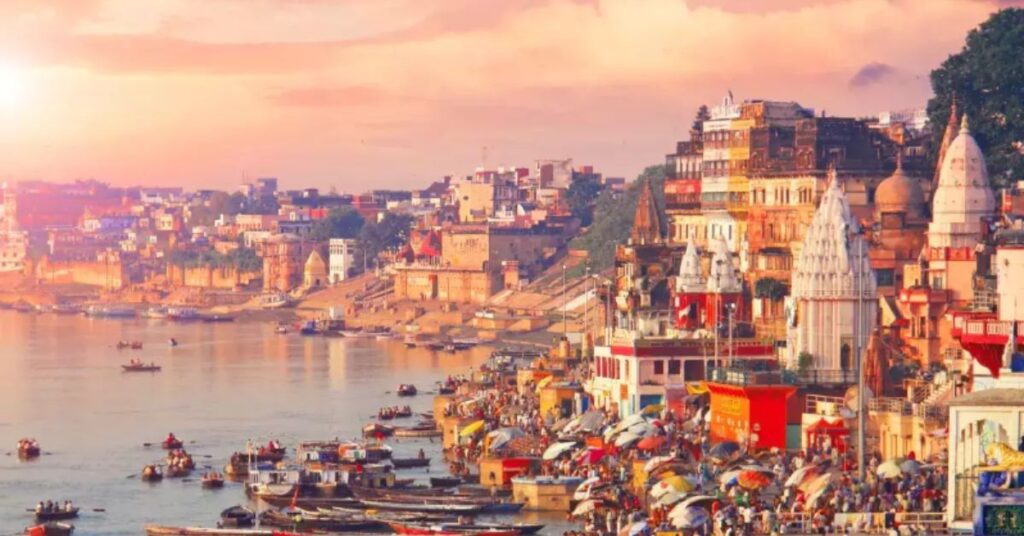
- Architectural Details of Historical Places in India: Ancient temples, bustling ghats, and historic buildings.
- Historical Significance: Important religious center for Hindus.
- Best Time to Visit Historical Places in India: October to March
- Extra Detail: The evening Ganga Aarti at Dashashwamedh Ghat is a mesmerizing experience, offering a glimpse into the spiritual essence of Varanasi.
The Red Fort, Delhi
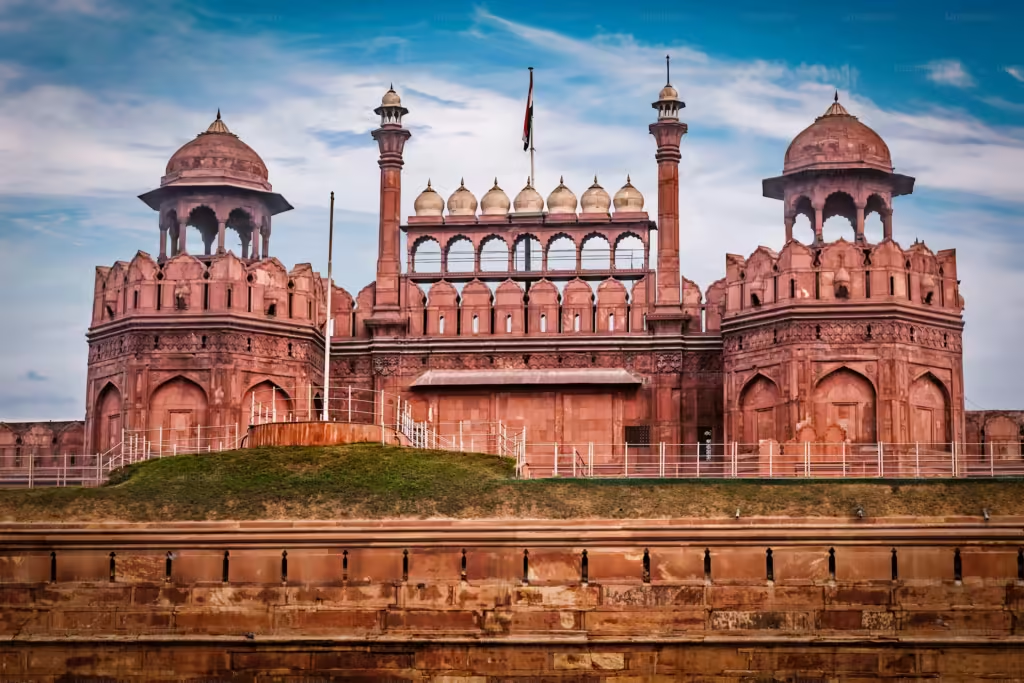
Crowned with crimson sandstone, the Red Fort rises like a defiant emperor, a UNESCO World Heritage Site and a potent symbol of India’s rich heritage. Built by Shah Jahan in the mid-17th century, this formidable fortress wasn’t just a residence, it was the heart of the Mughal empire for nearly 200 years. Encircled by towering walls, the complex unfolds like a jeweled tapestry. Elegant palaces whisper of courtly life, audience halls echo with the murmurs of power, and lush gardens offer tranquil escapes. Today, the Red Fort stands not just as a testament to Mughal artistry, but as a poignant reminder of India’s cultural legacy.
- Architectural Details of Historical Places in India: Impressive red sandstone walls, beautiful gardens, and intricate marble structures.
- Historical Significance: Center of Mughal administration and power.
- Best Time to Visit Historical Places in India: October to March
- Extra Detail: The light and sound show at the Red Fort narrates the history of the Mughal Empire in a captivating manner.
The Majestic Mysore Palace, Karnataka
A jewel of Indo-Saracenic architecture, Mysore Palace (or Amba Vilas Palace) blends the grandeur of Hindu, Islamic, Rajput, and Gothic styles into a breathtaking masterpiece. Built in the early 20th century, it wasn’t just a palace, it was the seat of the Wodeyar dynasty. Step inside and be mesmerized by opulent interiors. Carved ceilings, stained glass windows, and elaborate frescoes depicting myths whisper tales of a bygone era. During festivals like Dasara, the palace transforms into a glittering spectacle. Thousands of lights illuminate its façade, creating a sight that leaves visitors awestruck.
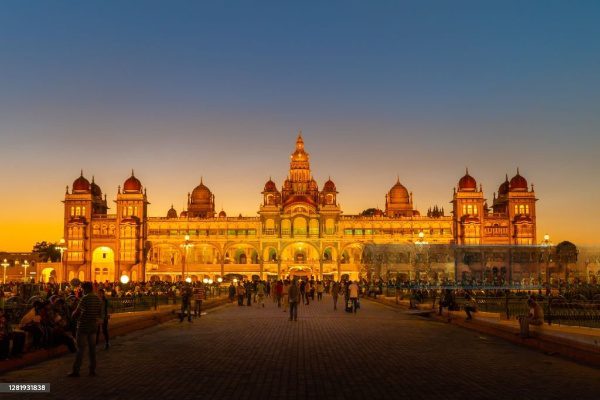
- Architectural Details of Historical Places in India: Beautifully decorated halls, intricate carvings, and expansive courtyards.
- Historical Significance: Residence of the royal family of Mysore.
- Best Time to Visit Historical Places in India: October to March
- Extra Detail: The palace is illuminated with thousands of lights every Sunday and during the Dasara festival, creating a spectacular sight.
The Magnificent Hampi, Karnataka
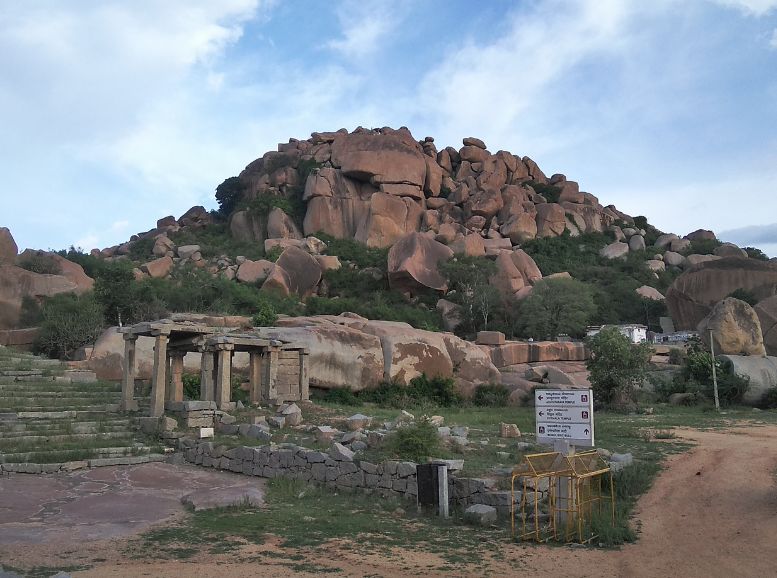
Whispers of a lost empire linger in the very stones of Hampi, a UNESCO World Heritage Site nestled amidst Karnataka’s rugged beauty. Once the grand capital of the Vijayanagara Empire, Hampi’s sprawling ruins are a captivating journey back in time. Imagine towering temples, intricate palaces, and ornate pavilions, all testaments to the bygone era’s artistic brilliance. Marvel at the iconic Virupaksha Temple, dedicated to Lord Shiva, and the awe-inspiring stone chariot of the Vitthala Temple.
- Architectural Details of Historical Places in India: Magnificent temples, grand palaces, and intricate carvings.
- Historical Significance: Capital of the Vijayanagara Empire, one of the richest cities in the world during its peak.
- Best Time to Visit Historical Places in India: November to February
- Extra Detail: The Virupaksha Temple in Hampi is still an active Hindu temple and attracts pilgrims from all over the country.
The Grand City of Fatehpur Sikri, Uttar Pradesh
Imagine a perfectly planned Mughal city rising from the red sands of India. That’s Fatehpur Sikri, a UNESCO World Heritage Site meticulously crafted by Emperor Akbar in the late 16th century. Though its reign as the Mughal capital was brief, lasting only about 14 years, its architectural legacy endures. Located near Agra, Fatehpur Sikri boasts a stunning blend of Indo-Islamic styles. Marvel at the towering Buland Darwaza, once the world’s highest gateway. Step inside the Jama Masjid, a grand mosque that rivals any in the land. Wander through the Diwan-i-Khas, a hall of private audience adorned with intricate carvings.
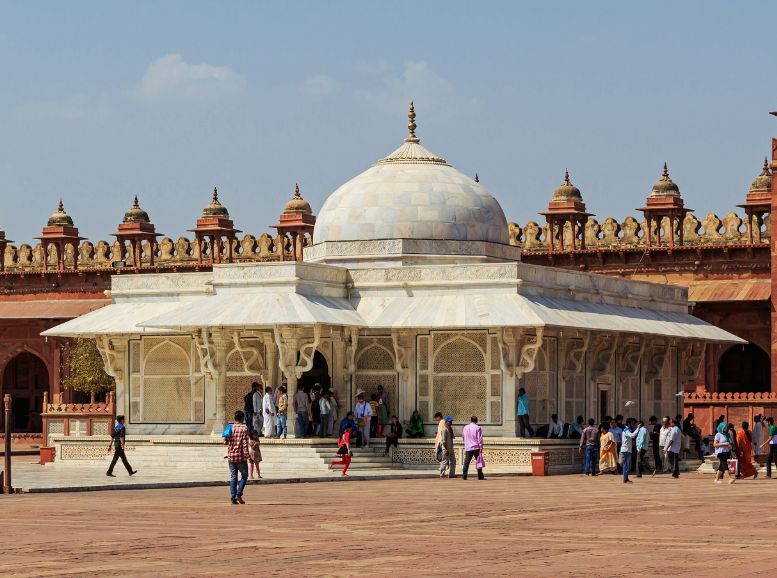
- Architectural Details of Historical Places in India: Beautiful palaces, grand mosques, and intricate carvings.
- Historical Significance: Capital of the Mughal Empire under Akbar.
- Best Time to Visit Historical Places in India: October to March
- Extra Detail: The Buland Darwaza, or “Gate of Magnificence,” is one of the highest gateways in the world and a remarkable example of Mughal architecture.
The Historical Site of Mahabalipuram, Tamil Nadu
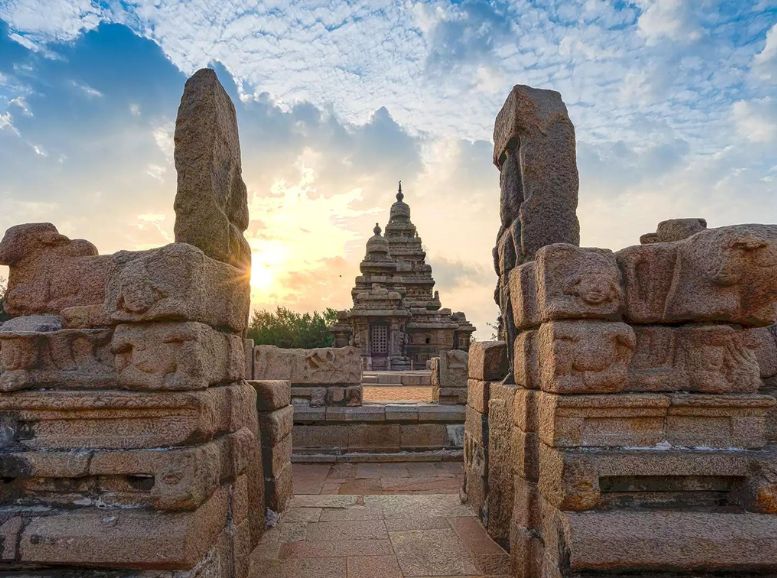
Imagine a place where temples rise from the earth itself. Welcome to Mahabalipuram, a UNESCO World Heritage Site nestled along India’s Coromandel Coast. This historic town thrived as a bustling seaport in the 7th and 8th centuries, its streets teeming with maritime trade. Mahabalipuram’s true treasures lie carved into the very rock. The magnificent Shore Temple, dedicated to Lord Shiva, stands as a sentinel, its intricate carvings whispering tales of Hindu mythology. Venture further and marvel at the monolithic wonders
- Architectural Details: Magnificent rock-cut temples, intricate stone carvings, and beautiful sculptures.
- Historical Significance: Important port city and center of art and architecture during the Pallava dynasty.
- Best Time to Visit Historical Places in India: November to February
- Extra Detail: The Shore Temple, overlooking the Bay of Bengal, is a testament to the architectural prowess of the Pallavas and offers stunning views at sunrise and sunset.
The Historic Gateway of India, Mumbai
Mumbai’s crown jewel, the Gateway of India, rises majestically against the Arabian Sea. This isn’t just a monument, it’s a portal to India’s history. Built in 1911 to welcome King George V and Queen Mary, this grand archway stands as a testament to a bygone era. Marvel at its Indo-Saracenic facade, a captivating blend of Indian and Islamic influences, adorned with intricate carvings and delicate latticework. The Gateway of India isn’t just a historical landmark, it’s a vibrant hub. Locals and tourists alike gather here, some to soak in the stunning views, others to embark on boat journeys to Elephanta Island.
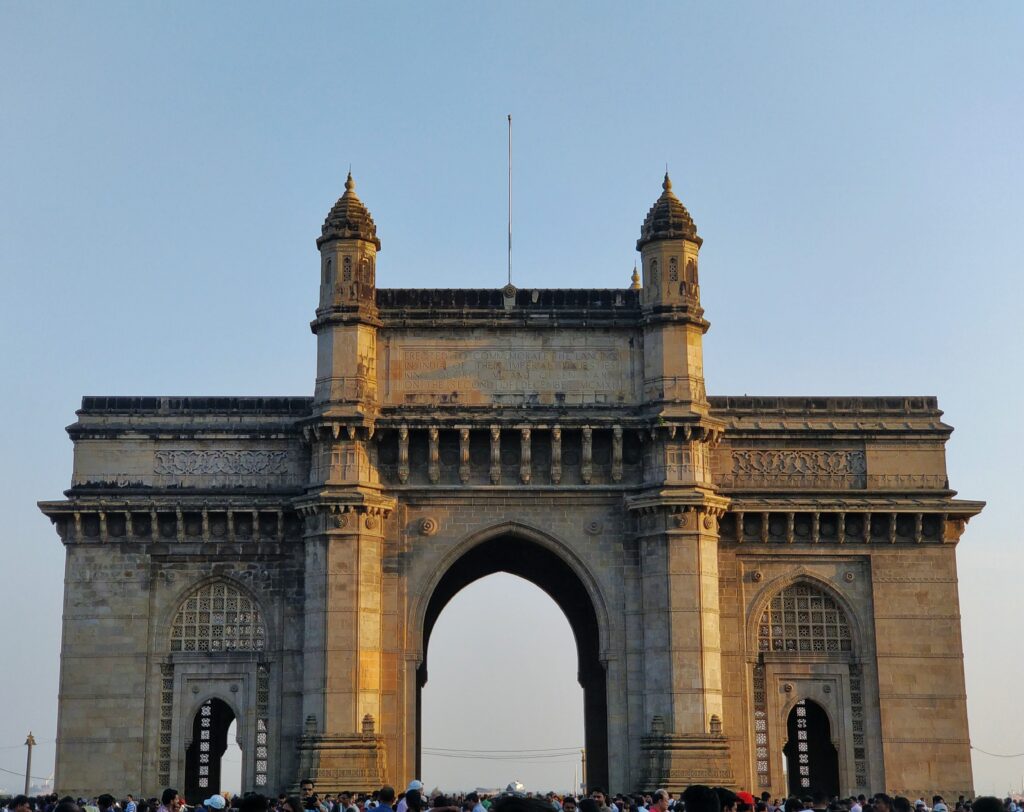
- Architectural Details: Impressive Indo-Saracenic architecture, grand archway.
- Historical Significance: Symbol of British colonial rule in India.
- Best Time to Visit Historical Places in India: November to February
- Extra Detail: The Gateway of India is the starting point for ferries to the Elephanta Caves, another significant historical site near Mumbai.
The Historic City of Amritsar, Punjab
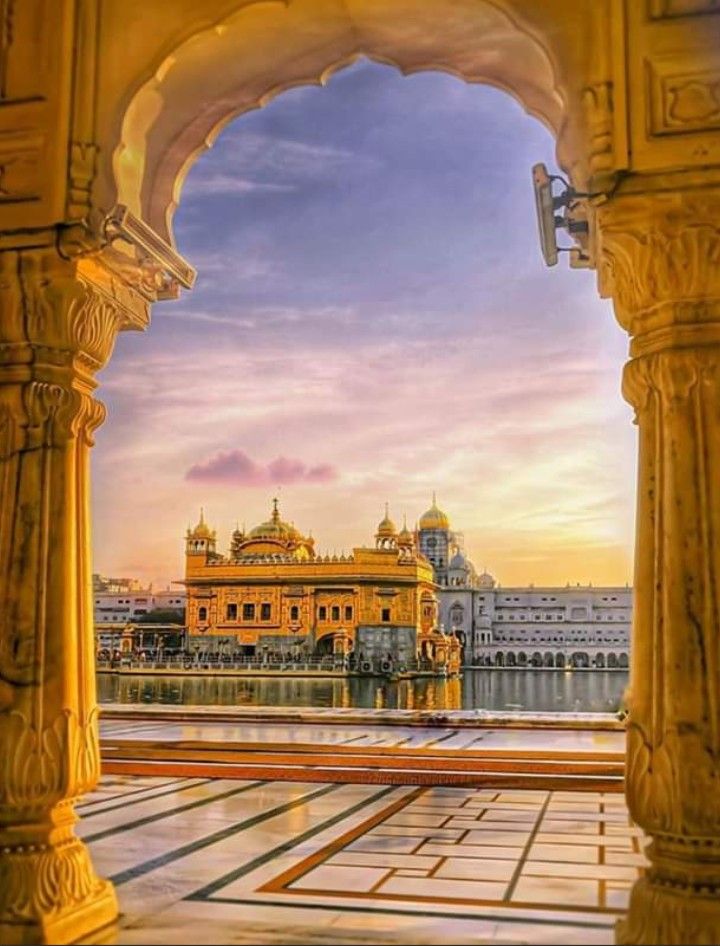
Amritsar, a city where history whispers in every corner and spirituality permeates the air, holds a special place as the home of the Golden Temple, also known as Harmandir Sahib. Revered as the holiest shrine in Sikhism, this iconic glistening temple beckons millions of devotees and visitors each year. Surrounded by the serene waters of the Amrit Sarovar (Pool of Nectar), its reflection dances on the surface. The rhythmic chanting of hymns mingles with the aroma of spices from nearby markets, creating a truly immersive experience.
- Architectural Details: Stunning golden dome, beautiful marble work, and serene water body.
- Historical Significance: Holiest site in Sikhism and a symbol of peace and spirituality.
- Best Time to Visit Historical Places in India: October to March
- Extra Detail: The daily flag-lowering ceremony at the Wagah Border, a short drive from Amritsar, is a patriotic spectacle that attracts visitors from all over the country.
Conclusion
As you’ve seen, India is a country that offers an incredible diversity of historical places, each one more captivating than the last. Whether you’re seeking to immerse yourself in the architectural grandeur, delve into the rich cultural heritage, or simply explore the ancient ruins, these historical places in India are sure to leave a lasting impression. So pack your bags, and get ready to embark on a journey through time with Xplro.com, exploring the historical places in India that tell the stories of its glorious past!
FAQs
What are some must-visit historical places in India?
- India boasts a wealth of historical sites, including iconic landmarks like the Taj Mahal, Red Fort, Hampi, and Fatehpur Sikri, each offering unique insights into India’s rich history.
What is the significance of the Taj Mahal?
- The Taj Mahal in Agra is celebrated worldwide as a UNESCO World Heritage Site and a symbol of enduring love, commissioned by Emperor Shah Jahan in memory of his beloved wife Mumtaz Mahal.
Why visit Hampi?
- Hampi, the erstwhile capital of the Vijayanagara Empire, is renowned for its sprawling ruins that include majestic temples, elaborate palaces, and vibrant markets, providing a vivid glimpse into India’s medieval history.
What can visitors expect at the Red Fort in Delhi?
- The Red Fort, a masterpiece of Mughal architecture, served as the principal residence of Mughal emperors for centuries. Visitors can explore its impressive structures, intricate gardens, and the famed Diwan-i-Khas and Diwan-i-Aam.
What makes Fatehpur Sikri unique?
- Built by Emperor Akbar in the 16th century, Fatehpur Sikri is distinguished by its architectural grandeur and served as the Mughal capital for a brief period. The complex includes stunning palaces, mosques, and the renowned Buland Darwaza.
Why is Mahabalipuram famous?
- Mahabalipuram, recognized for its rock-cut temples and intricately carved sculptures, reflects the artistic achievements of the Pallava dynasty, showcasing a blend of Dravidian and Buddhist architectural styles.
What is special about the Ajanta and Ellora Caves?
- These UNESCO World Heritage Sites feature ancient rock-cut caves adorned with exquisite sculptures and frescoes, portraying Buddhist, Hindu, and Jain religious themes dating back to the 2nd century BCE.
What is the historical significance of Varanasi?
- Varanasi, one of the oldest continuously inhabited cities in the world, is revered as a sacred city in Hinduism. It is renowned for its ghats along the Ganges River, ancient temples, and vibrant cultural traditions.
Why visit the Golden Temple in Amritsar?
- The Golden Temple, also known as Harmandir Sahib, holds profound spiritual significance as the holiest shrine in Sikhism. Its shimmering golden facade, surrounded by the Amrit Sarovar (Pool of Nectar), attracts millions of pilgrims and tourists annually.
What can visitors explore in Mysore Palace?
- Mysore Palace, a masterpiece of Indo-Saracenic architecture, captivates visitors with its opulent interiors, royal artifacts, and vibrant Dasara celebrations, offering a glimpse into the rich cultural heritage of the Wodeyar dynasty.
Why is Hampi a UNESCO World Heritage Site?
- Hampi’s extensive ruins, sprawling across a rugged landscape, preserve the grandeur and architectural splendor of the Vijayanagara Empire. It is a UNESCO World Heritage Site, drawing history enthusiasts and travelers alike.
What are some lesser-known historical gems in India?
- India abounds with lesser-known historical treasures such as Gwalior Fort, Chittorgarh Fort, and Sanchi Stupa, each showcasing unique aspects of India’s diverse history and cultural heritage.





